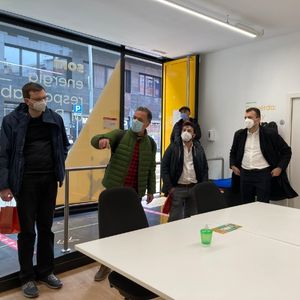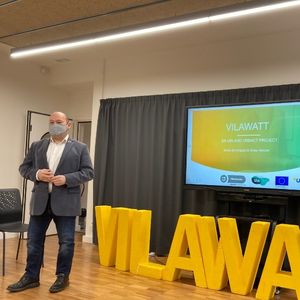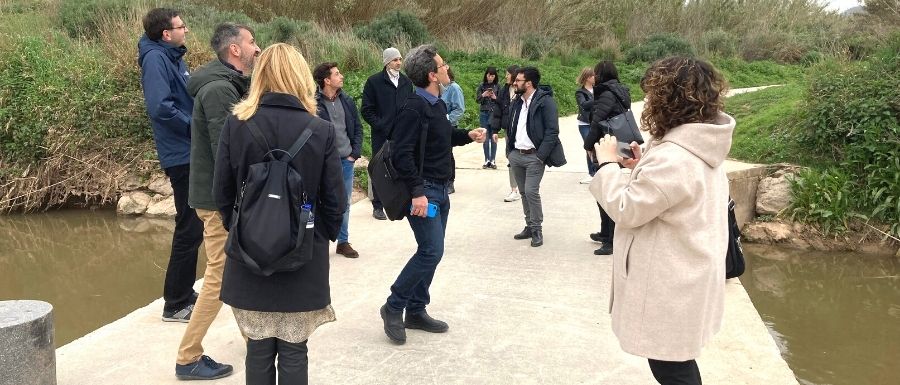A cloudy day did not stop partners of the “CAMELOT Project” to reach the headquarters of the “Metropolitan Area of Barcelona” (AMB), to join the second international meeting on 28 March 2022
Structured as two-days event, the meeting started with a presentation, by the Deputy Head of the Unit of Communication, DG Regio – European Commission, Mr. Diego Villalba, presenting data from Eurobarometer. Specifically, based on a survey investigating the awareness of people on EU co-funded projects, in terms of cohesion funds, in their own areas/neighborhood/cities, Mr. Villalba showed the positive impact that these funds have on those polled.
This first presentation opened the floor to further discussion, digging deeper into the core of the project itself: creation and improvement of instruments to increase citizens’ participation in public decisions, also in relation to the European Funds and energy transition. Starting from the “Model Region Green Hydrogen” in the Stuttgart Region (Baden-Württemberg), targeting the usage of hydrogen to connect different sectors, be they industry and mobility; to the action plan on energy sustainability (SECAP) developed by the city of Zagreb; “POCITYF” project presented by the Metropolitan City of Bari; aimed at better manage energy consumption, also when it comes to the impact of cities a global scale.
Cohesion Policy and European Funds: the virtuous examples of the metropolitan cities
The meeting then continued with the second roundtable, highlighting, this time, the digital aspects and initiatives in urban areas. As for the first occasion, partners shared initiatives implemented in their own realities. “ESMARTCITY” initiative, targeting the reduction of energy consumption while exchanging best practices with other cities, by Metropolitan City of Milan; or the project implemented by the Municipality of Craiova on means of transportation, also in terms of mobility for highschool students, and pupils. Similarly, “SWITCH TO INNOVATION” project, is meant to digital innovation and accessibility to technology in the city of Valongo. Last but not least, the city of Gavà presented “GAVIUS” boosting the use of artificial intelligence to engage citizens with the services provided by public administrations for example.
In addition, the afternoon was dedicated to an interactive workshop during which participants share, by using colored papers, their opinion and ideas on different topics, such as digital, social, and green
Finally, considering the current situation in Ukraine; the presence of representatives of Gdansk Metropolitan Area, and the commitment of this city in reuniting more than 200 mayor all around Europe to join forces earlier in March, Mr. Michal Glaser presented the joint statement in support of Ukrainian people.
With great engagement from all participants, the meeting ended with the steering committee of the CAMELOT Project.




